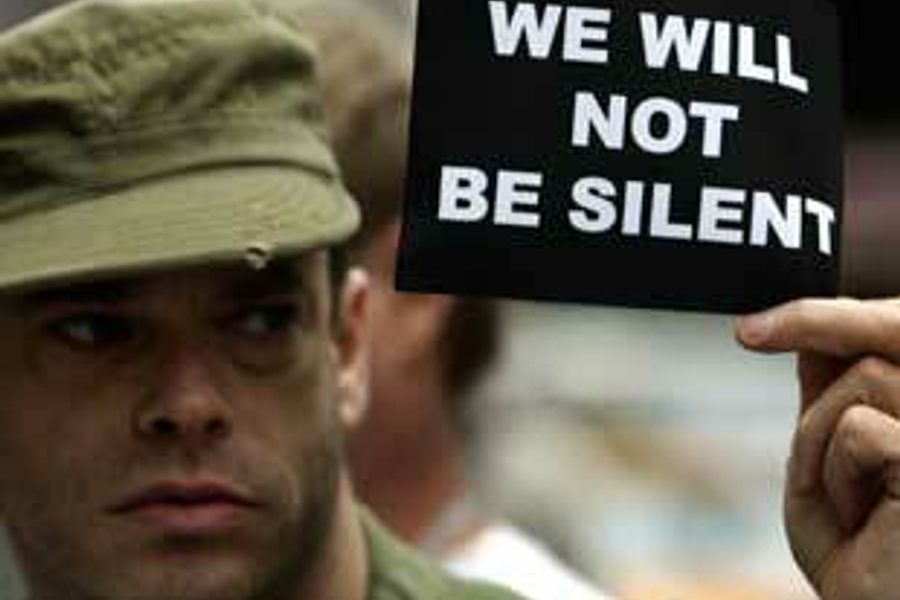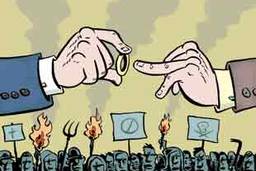Defining Hate in the United States
Despite widespread public support, hate crime law across the country remains inconsistent and the crimes often go unpunished.
John Ireland

On Feb. 13, 72-year-old Andrew Anthos was attacked in front of his apartment building in Detroit after returning home from the public library. His assailant was a fellow passenger on the bus who had confronted Anthos because he did not like his singing. The youth asked Anthos if he was gay, followed him off the bus, and struck him in the head with a metal pipe. Anthos died after 10 days in critical condition. Despite witnesses on the bus and at the scene of attack, law enforcement has not successfully identified the suspect.
Unfortunately, all too often, it is only the most violent hate crimes, like Anthos’ murder, that are reported as such.
Studies show that victims of hate crimes rarely report the assaults to law enforcement because of fear and isolation. Such underreporting further leads to a false impression of the effect that real attacks have within communities.
Hate crimes underreported
According to Gregory M. Herek, a psychologist at the University of California at Davis, gays and lesbians report hate crimes to law enforcement only one-third of the time. Research shows that victims of severe hate crimes such as sexual assaults are the least likely of all hate-crime victims to report. The National Council of La Raza holds that Hispanics often do not report hate crimes because they mistrust the police.
Karen Franklin, a forensic psychology fellow at the Washington Institute for Mental Illness Research and Training, identifies four motives common to such crimes: ideology, thrill seeking, peer dynamics and panic defense. The common thread, she says, is that “offenders perceive that they have societal permission to engage in violence against homosexuals.”
“Hate crimes are message crimes,” says Jack McDevitt, a criminologist at Northeastern University. “The offender is sending a message to members of a particular group that they are unwelcome.”
According to the American Psychological Association (APA), most hate crimes are committed by “otherwise law-abiding young people who see little wrong with their actions… [and who see] difference as threatening.” The APA further asserts, “There is overwhelming evidence that society can intervene to reduce or prevent… hate-induced violence that threatens and intimidates whole categories of people.”
A patchwork of laws
Nineteen states fail to include sexual orientation in their hate-crimes legislation. Law enforcement may view an alleged crime as motivated by hate, but prosecutors are limited to charges recognized within state code.
Although the commonsense meaning of “hate crime” may seem obvious, the legal definition differs from jurisdiction to jurisdiction. A crime that carries an enhanced penalty in one state might not in another, or only if it is prosecuted in federal court. The debate over what constitutes a hate crime has raged for nearly four decades, with alternating accusations of police insensitivity and prosecutorial overzealousness. Critics accuse such laws of criminalizing certain types of thought. Nevertheless, in 1993, a unanimous Supreme Court found hate crimes laws to be constitutional, as long as they prosecute criminal activity and not speech activities protected by the First Amendment.
According to Brad Luna, director of media relations at the Human Rights Campaign (HRC), fewer than 11 prosecutions are brought under the federal statute each year. Most violent crimes are prosecuted at the local level. Amid vocal opposition, 45 states have passed hate or bias crime laws, but only 31 of those include sexual orientation. Florida includes sexual orientation in its hate crime code, but Oklahoma and Michigan do not. Despite witness accounts that the attack in Detroit was anti-gay, the state does not provide for an enhanced penalty on that criterion.
The federal government, which does not prosecute hate crimes based on sexual orientation, does collect data on them and provides specific training to local law enforcement. In 1990, President George H.W. Bush signed into law the “Hate Crimes Statistics Act,” which required the Justice Department to collect data about crimes that manifest evidence of prejudice based on race, religion, sexual orientation or ethnicity. In 1994, the law was amended to include physical and mental disabilities. In 1996, the FBI published its “Training Guide for Hate Crime Data Collection,” which cites many examples of what law enforcement should classify as hate crimes based on sexual orientation.
Data collection is inconsistent
According to the Southern Poverty Law Center (SPLC), which tracks the origins of such crimes, the data collection law was “doomed from the start.” Reporting under the statute is voluntary and many local law enforcement agencies choose not to participate. John Holland, a retired senior program specialist who led Federal Law Enforcement Training Center efforts to teach officers about hate crime until 2000, told the SPLC’s Winter 2001 Intelligence Report that despite the FBI’s detailed classification system, many are unsure what a hate crime is and how to report one, “training is rare in police academies and even in most police departments.”
A decade of data indicates that law enforcement agencies are increasingly using the FBI’s Hate Crime Summary report. In 1995, 9,584 agencies participated, covering 75 percent of the U.S. population. That percentage increased to 83 percent in 2005. However, the rate of zero reporting has remained the same: 84 percent of law enforcement agencies reported no hate crimes whatsoever in 1995 and 2005.
Law enforcement vs. prevention
Edward Dunbar, a clinical psychologist at UCLA, points out that law enforcement’s job is exactly that: law enforcement. And it’s difficult to say whether hate crime laws may or may not have a deterrent effect. The greater community can play an important role, however.
Dunbar explains, “Prevention is about education and, at least in major metropolitan areas, this is best addressed by a Human Relations Commission.” These networks of social “stakeholders” include community leaders, educators, pastors and elected officials. “Communities have to arrive at a basic decision against violence that has to do with difference and answer the question, ‘Where does it begin and end?’” Dunbar draws a direct parallel between hate crime reporting and the community’s ability to respond with preventive education.
On March 20, Reps. John Conyers (D-Mich.) and Mark Kirk (R-Ill.) introduced the Local Law Enforcement Hate Crimes Prevention Act (H.R. 1592). The act adds “actual or perceived … sexual orientation, gender, gender identity or disability,” to the list of conditions that trigger federal support to investigate and prosecute. A companion bill was introduced in the Senate by Sens. Gordon Smith (R-Ore.) and Ted Kennedy (D-Mass.) on April 12.
The legislation has been endorsed by 31 state attorneys general and more than 210 national law enforcement, professional, education, civil rights, religious and civic organizations. A Kaiser Family Foundation poll released in November 2001 showed that 73 percent of Americans support including sexual orientation in hate crime legislation.
In response, says Luna, “the typical anti-gay, right-wing extremist organizations” are mobilizing against H.R. 1592. The American Family Association is calling for its members to oppose the legislation because it “further protects homosexual activity,” and the Family Research Council is urging its members to “continue to pray that Congress will vote down … any federal Hate Crimes.”
In explaining why he sponsored the bill, Kirk told In These Times, “As a veteran of Kosovo, I saw firsthand what happens when a government allows one group to violently stigmatize another.” He continues, “Congress must uphold our promise of ‘Never Again’ and give local law enforcement the tools they need to investigate and prosecute hate crimes.”








